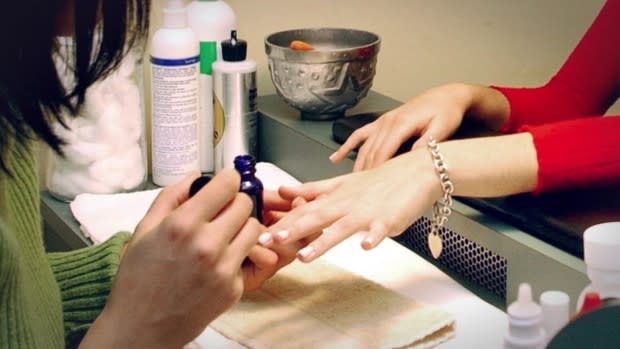Beauty industry insiders call for regulation after woman burned by laser hair removal
A lack of mandatory training in the beauty industry is putting clients at risk of permanent injuries, a problem some industry professionals say will continue until the provincial government imposes more regulation.
Until 2003, anyone practising beauty services like hair styling, esthetics or nail art in B.C. had to pass an exam to be certified under the Cosmetologists Act, ensuring service providers had a minimum level of training.
That act was repealed in 2003, leaving the industry unregulated.
Since then, a broader range of more invasive procedures have increased in popularity, said Greg Robins, executive director of the Beauty Council of Western Canada, an organization that seeks to heighten the quality of the B.C. beauty industry by offering exams and certifications in safety, sanitation and competency.
These procedures include microblading — a procedure in which semi-permanent ink is deposited into tiny incisions in the skin to create the appearance of fuller brows — and laser hair removal, he said.
Training for services like these is optional.
"There are absolutely no regulations or certifications required to perform those services," Robins said. "You could do it. I could do it. Anyone can do it.
"There's so many things that can go wrong and do go wrong."

Training not mandatory
Earlier this week, CBC News told the story of a woman who is calling for regulation in the industry after she suffered scarring all over her lower body following a laser hair removal service at Ideal Image in Vancouver.
Done improperly, the procedure can cause severe burns and permanent scarring, said Dariush Honardoust, an instructor with the B.C. Academy of Medical Aesthetics and Skincare, which offers multi-day training courses in laser hair removal.
Some companies that sell laser hair removal machines provide as little as four hours of training before technicians are free to work on customers, he said.
In an emailed statement, Ideal Image says staff must complete a 120-hour in-house training program before working on clients.
Honardoust said he has been calling on the government for years to set and maintain minimum standards.
"This is how it's supposed to be [for] any other areas of practice," he said, citing regulations around chiropractors, acupuncturists and dental hygienists.
"I don't see that laser technicians and medical estheticians are exceptions because they are dealing with tissue, sometimes biological fluids of the patients and skin ... and that's something that needs to be regulated."
Trade certification is not required to work as a beauty professional in B.C., but they must have "adequate training" to recognize, prevent and respond to health hazards that could arise during a procedure, said Ministry of Health spokesman Stephen May.
The province also provides guidelines for certain types of beauty services.
A 25-page guideline for laser hair removal created by the B.C. Centre for Disease Control in 2005 includes information about working safely with laser hair removal devices. The final page includes 11 true or false safety questions, like "protective eyewear that is cracked or loose is OK to wear."
It recommends operators not work with lasers until all those questions can be answered correctly.
Some provinces do regulate the beauty industry. In Alberta, for example, a hairstylist must hold a certificate recognized by Alberta Apprenticeship and Industry Training or be a registered apprentice to cut, colour and style a customer's hair.
Why B.C. hasn't reintroduced the licensing of cosmetologists — something Robins calls the "most basic legislation" — is a mystery, he said.
"That in itself would be a massive step forward," he said. "In an ideal world, regulations would really be focused on education, training and certification."

